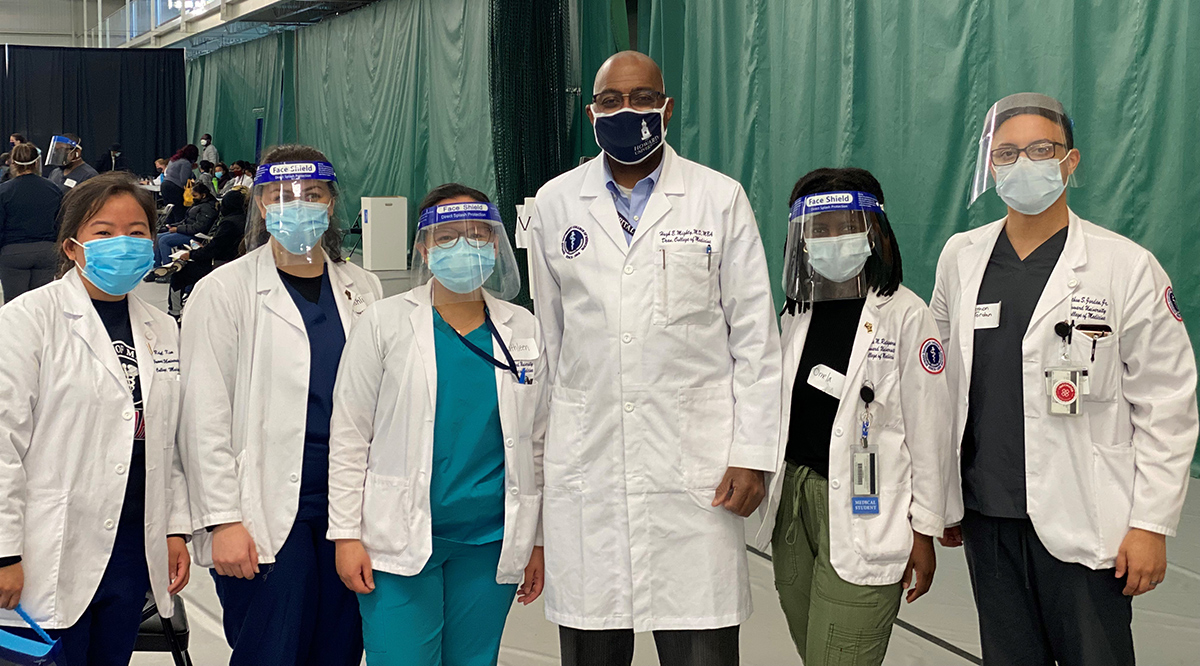
Editor’s note: The opinions expressed by the author do not necessarily reflect the opinions of the AAMC or its members.
This year’s first-year class of medical students is more diverse than ever before. In fact, the number of Black or African American students who matriculated into medical school for the 2021-2022 academic year increased by 21%, according to data from the AAMC. But those numbers belie a disturbing history of bias and racial inequity in medical school admissions dating back more than a century — one that continues today and that can be overcome only with intentionality and less focus on high Medical College Admission Test® (MCAT) scores for admittance into medical school.
Bias in medical education was crystalized in the early 1900s, when the American Medical Association and the Carnegie Foundation charged educator Abraham Flexner with assessing the education of students at all 155 medical schools in the United States and Canada. His findings, published in 1910 in what is now known as the Flexner Report, led to the closing of 89 of the existing medical schools of the day. More notably, it forced the closure of five of the seven schools focused on educating Black medical students — only Howard University College of Medicine (COM) in Washington, DC, and Meharry Medical College in Nashville, Tennessee, remained.
Today, the number of medical schools is once again back to pre-Flexner levels. However, only Morehouse School of Medicine in Atlanta, Georgia, and the Charles R. Drew University of Medicine and Science/UCLA in Los Angeles have been accredited as Black medical schools during this time. Just in the last decade, 24 new medical schools have been accredited, but none has a focus on educating Black physicians, nor do their class makeups reflect the makeup of the Black population, which currently stands at 12% of the U.S. population.
As the COVID-19 pandemic wanes, many have called on medicine to address the numerous health and racial inequities exposed by this disease. Especially in the early months, communities of color suffered exponentially more infections, hospitalizations, and deaths due to COVID-19, and a lack of access to and trust in the health care system is largely to blame.
That trust starts with the health care workforce. According to AAMC data, Black physicians make up just 5% of the U.S. health care workforce, a figure that has hardly changed since the 1970s. And while the increase in Black matriculants to medical school for the 2021-2022 academic year is impressive, we must do more to ensure that Black students continue to be accepted into all medical schools — not just the medical schools that are affiliated with historically Black colleges and universities (HBCUs).
One challenge to entry is the MCAT score. Schools vary widely in their criteria for the minimal score to grant a candidate an interview, but very few candidates who score below 500 (relative to the entire pool of applicants) find themselves with an interview. Unfortunately, many of those who score in the lower MCAT band are Black applicants.
Howard University COM, along with other HBCU medical schools, has been training Black physicians as a core mission for more than 150 years. Indeed, as the longest continuously operating medical schools of these HBCUs, Howard and Meharry have trained the most Black physicians in the nation.
Howard University COM views the medical educational journey as one of creating opportunity for those who otherwise would not have it. The students who are admitted fall below the mean of the national MCAT average (503 vs. 511), with mean science undergraduate GPA of 3.4 (vs. national science undergraduate GPA of 3.6). Howard’s entrance criteria for consideration of acceptance are based on multiple factors, including MCAT score (494), undergraduate GPA, personal statements, recommendations, and life experiences. The five-year graduation rate for Howard is 87% and the six-year graduation rate is 93%. Howard places 95% of its graduates into residency programs post-graduation. Howard’s track record shows that when given opportunity, students are successful despite the gap in MCAT scores. (National data also show that considering a broader range of MCAT scores can increase medical student diversity.)
Medical school admissions processes also have a significant potential for bias. To address some of these, several years ago Howard University COM adopted a holistic approach by requiring its admissions committee members to undergo unconscious bias training, and then blinding them to applicants’ MCAT and undergraduate GPA scores until after the interview. While this process does not eliminate bias completely, it does address one of the largest issues, which is the highly weighted impact of the MCAT and GPA prior to the candidate arriving for an interview.
What we have found is that a lower MCAT score does not predict eventual success, and we encourage all medical schools to adopt this strategy. If every medical school in the nation was intentional about accepting one more Black student each — even if that student arrived with a slightly lower MCAT score than the school’s average — that would be the equivalent of opening two to three new medical schools.
It should also be recognized that providing a nurturing medical training environment is necessary. Much like the bias in associating the quality of a candidate to their MCAT score, there is a push by schools to graduate students in four years, or to measure first-time pass rates on the United States Medical Licensing Examination Step 1 exam. Learners move at different paces, and our ability to adapt our programs will lead to greater success for all matriculants. More emphasis should be placed on developing well-prepared students who achieve placement into a residency program than on how quickly they can get there.
Diversity matters, and it starts by educating a class of medical students who can provide culturally responsive care for an increasingly diverse patient population. There is much more to be done, and we will only succeed through an intentional process that is flexible, less burdened with number bias, and focused on the whole student.
